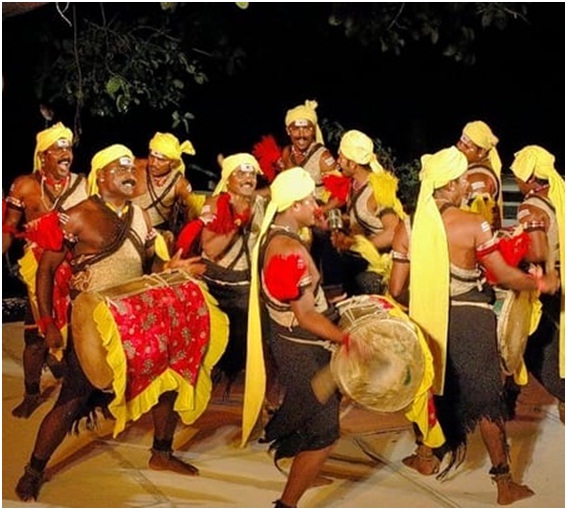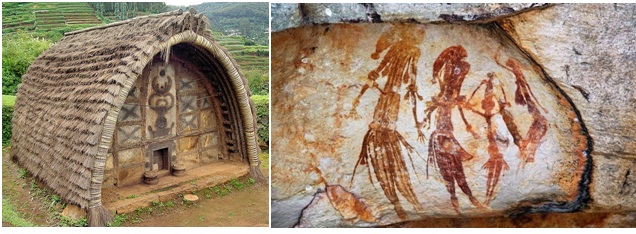
Fascinate with captivating sceneries of the ‘Queen of Hill station’ Ooty, lies an ancient, untouched civilization
Ooty or Ootacamund is the favorite getaway in the hills for many. The word itself is derived from the original word Ottakalmandu. Ottakal is assumed to refer to a single stone which is believed to be a sacred stone of the Toda tribals who are the original inhabitants of the region and Mandu refers to a village in the Toda language. The Toda village is one of the hidden gems of ELK Hill, Ooty. There are total of 18 tribes present in Ooty, the Toda’s are one of them. The Nilgiri’s is the abode of many other interesting tribes few are Kotas, Mostly found in Kotagiri, Kurumbas , Irulas , Mullukurumbas and Paniyans.
The Toda’s of Ooty are the indigenous people of the region of Dravidian descent, they have inhabited the Nilgiri mountains from well before the 18th century. Today the tribal community has dwindled to less than a thousand. The ethnic culture of the Toda’s is really fascinating and is a window to history.

Todas live in bamboo huts with thatched roofs that are in a semi barrel shape.
Toda huts are a curious construction with a complete absence of windows. They are rectangular in plan, with a barrel-vaulted roof that reaches down to the ground. They are 3m high, 5.5m long, and 2.7m wide. The entrance of the hut is rather small (about 90cm in height and width), to protect the family from the weather and wild animals.
Each Toda hut is constructed from bamboo that is fastened with rattan and thatched. Thicker bamboo canes are arched to give the roof its bent shape. Over this frame, thinner bamboo canes are tied in pairs running parallel to each other. Dried grass is used for the thatched exterior. The front and rear sides of the Toda hut are made usually of granite or dressed stone. The front portion of the hut is decorated with the Toda art forms, a kind of rock mural painting.
The interior of the hut is windowless and dark and consists of a single space. A raised earthen platform about 45-60cm high is used as a sitting and sleeping place. On the other side of the hut is the cooking area. A small hole sunk into the ground, approximately in the center of the house, divides the space into pure and impure areas. The structure has no chimney; smoke from the fire left the house through its thatched roof.
There are two types of Toda temples called paluvarsh and poovarsh. The paluvarsh type is similar in appearance and construction to typical Toda huts. The other type of temple called poovarsh is cylindrical with a long, conical roof. The major Toda festivities are conducted in and around poovarsh, and only priests are allowed to enter.
Drive 11kms ahead of Ooty to visit the Tribal Research Museum and learn more about this tribe’s journey from rural to modern India.

 Todas live in bamboo huts with thatched roofs that are in a semi barrel shape.
Toda huts are a curious construction with a complete absence of windows. They are rectangular in plan, with a barrel-vaulted roof that reaches down to the ground. They are 3m high, 5.5m long, and 2.7m wide. The entrance of the hut is rather small (about 90cm in height and width), to protect the family from the weather and wild animals.
Each Toda hut is constructed from bamboo that is fastened with rattan and thatched. Thicker bamboo canes are arched to give the roof its bent shape. Over this frame, thinner bamboo canes are tied in pairs running parallel to each other. Dried grass is used for the thatched exterior. The front and rear sides of the Toda hut are made usually of granite or dressed stone. The front portion of the hut is decorated with the Toda art forms, a kind of rock mural painting.
The interior of the hut is windowless and dark and consists of a single space. A raised earthen platform about 45-60cm high is used as a sitting and sleeping place. On the other side of the hut is the cooking area. A small hole sunk into the ground, approximately in the center of the house, divides the space into pure and impure areas. The structure has no chimney; smoke from the fire left the house through its thatched roof.
There are two types of Toda temples called paluvarsh and poovarsh. The paluvarsh type is similar in appearance and construction to typical Toda huts. The other type of temple called poovarsh is cylindrical with a long, conical roof. The major Toda festivities are conducted in and around poovarsh, and only priests are allowed to enter.
Todas live in bamboo huts with thatched roofs that are in a semi barrel shape.
Toda huts are a curious construction with a complete absence of windows. They are rectangular in plan, with a barrel-vaulted roof that reaches down to the ground. They are 3m high, 5.5m long, and 2.7m wide. The entrance of the hut is rather small (about 90cm in height and width), to protect the family from the weather and wild animals.
Each Toda hut is constructed from bamboo that is fastened with rattan and thatched. Thicker bamboo canes are arched to give the roof its bent shape. Over this frame, thinner bamboo canes are tied in pairs running parallel to each other. Dried grass is used for the thatched exterior. The front and rear sides of the Toda hut are made usually of granite or dressed stone. The front portion of the hut is decorated with the Toda art forms, a kind of rock mural painting.
The interior of the hut is windowless and dark and consists of a single space. A raised earthen platform about 45-60cm high is used as a sitting and sleeping place. On the other side of the hut is the cooking area. A small hole sunk into the ground, approximately in the center of the house, divides the space into pure and impure areas. The structure has no chimney; smoke from the fire left the house through its thatched roof.
There are two types of Toda temples called paluvarsh and poovarsh. The paluvarsh type is similar in appearance and construction to typical Toda huts. The other type of temple called poovarsh is cylindrical with a long, conical roof. The major Toda festivities are conducted in and around poovarsh, and only priests are allowed to enter.

